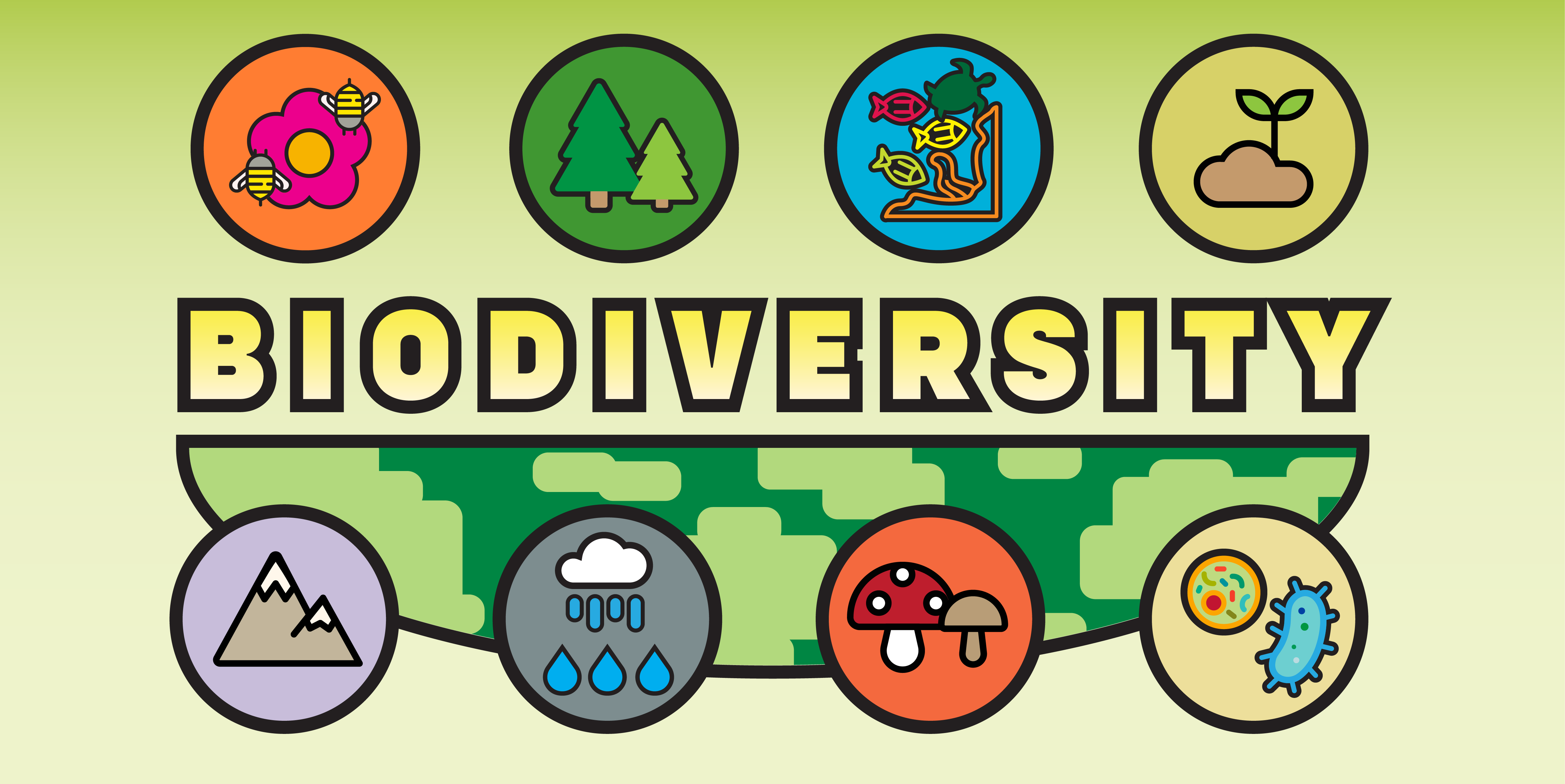From plants and animals to fungi and bacteria, biodiversity is the remarkable variety of life on earth. Through its many forms and interactions, biodiversity performs valuable functions that support life itself, including humans. But as human activity is increasing the planet’s damage, we also face the risk of imbalanced ecosystems.
Biodiversity is the most complex system on our planet, as it provides plants, animals and humans with our most vital resources. It’s the sole responsibility of why we are here, and without it, there may be no future for humanity.
Life depends on so many systems to thrive, which can all be captured under the umbrella of biodiversity. As we are currently navigating through the upsurge of climate change, it’s especially important to consider that the loss of biodiversity reduces nature’s ability to resist a changing climate.
Along with the necessary resources needed for survival, biodiversity is also related to human cultural diversity. According to the American Museum of Natural History, the term “biocultural” can be used to describe the association between the continuous evolution of nature, people, and place.
If you think about the group of people you surround yourself with and the many foods, materials, customs, and practices you all participate in, you might consider the social and biological conditions needed to generate it all.
The concept of “biocultural” emphasizes the importance of human use, knowledge, beliefs, and how it relies heavily on the health state of biodiversity. From the foods you eat and the clothes you wear, to artistic expression and festivals, without healthy ecosystems the essential resources and materials required for these valuable activities may decline.
According to the Smithsonian, scientists often speak of several levels when it comes to biodiversity; starting with genetics, then species, and entire communities of creatures known as ecosystems. Each level, although through a hierarchical system, works together to produce the same outcomes by interacting and influencing one another.
In turn, this makes each level of equal importance, meaning that when one level experiences change, so does the next one, reaching each level until it soon impacts humans and our own ways of life. This includes the clothes we wear, oxygen we breath, or the materials needed to build homes and develop pharmaceuticals to stay healthy.
While some examples of biodiversity being the basis of life might seem obvious, such as plants photosynthesizing to create air or bees pollinating to cultivate fruits and nuts, others are less noticeable, and may even appear bizarre.
According to The Guardian, the health state of coral reefs and mangrove swamps is crucial in providing protection against tropical cyclones and other extreme weather events for those living on the coasts.
Our primary photosynthesizers, hardwood trees, are one of the most reliable in removing and absorbing carbon dioxide from the atmosphere in urban areas. They also depend on a pair of animals who seemingly have little to do with maintaining the stability of climate change – tropical tortoises and spider monkeys – to distribute their seeds across the area.
In exploring each ecosystem, scientists continue to find countless interactions as such which all have been developed over years of evolution. However, the main driver in biodiversity loss remains encompassed by urbanization, food production, and the burning of fossil fuels.
According to the United Nations, human activity has already altered an estimated 70% of land around the globe, influencing shifts in the dispersal of plants, disease and viruses, and even the settlements of some human communities.
About half of the greenhouse gasses released into the atmosphere are absorbed by land and the ocean, or “natural carbon sinks,” says the United Nations. This means terrestrial and aquatic ecosystems play essential roles in understanding the carbon cycle, while also managing to adapt to its rapid changes.
While these ecosystems work together to reduce atmospheric carbon, millions of species cooperate to supply us with a variety of grains, vegetables, fruits, and animal products.
Through things like pollination, adaptation to disease, maintaining the fertility of soil, and the balance of climate, food production is possible because of biodiversity’s raw materials and intricate web of functions.
Biodiversity marks the interrelation between all living things on Earth, and emphasizes how much we all rely on one another. If not all, most of the environmental, social, cultural, and spiritual benefits are made available to us due to complex interactions between species.
Whether it be through reevaluating the products you use, your diet, or maybe the energy your home uses, there are many ways we can go about preserving biodiversity and mitigating the impacts of climate change.
According to Yale University, making it a point to regularly purchase from the local farms in your area helps to keep their income in a local range, while also supporting efforts in conserving agricultural diversity.
Bees are one of the major species that allow more than 180 different flowering plants, such as fruits and vegetables, to flourish. Because certain species of bees are facing population decline due to human activity, it’s also important we focus on providing a habitat they can fall back to.
In doing this, you might take the time to plant flowers that produce nectar in your backyard, or even build small bee boxes for them to reside in. Either way, you’re aiding in both the abundance of pollination, and investing time into nursing flora which is fulfilling to the health of ecosystems.
By respecting local habitats, you might also consider the resources you utilize daily, and their potential roles in biodiversity loss and degradation. This can include buying fewer products to ensure the minimization of waste, taking shorter showers, recycling, or supporting local projects that aim in reducing the alteration of ecosystems.

